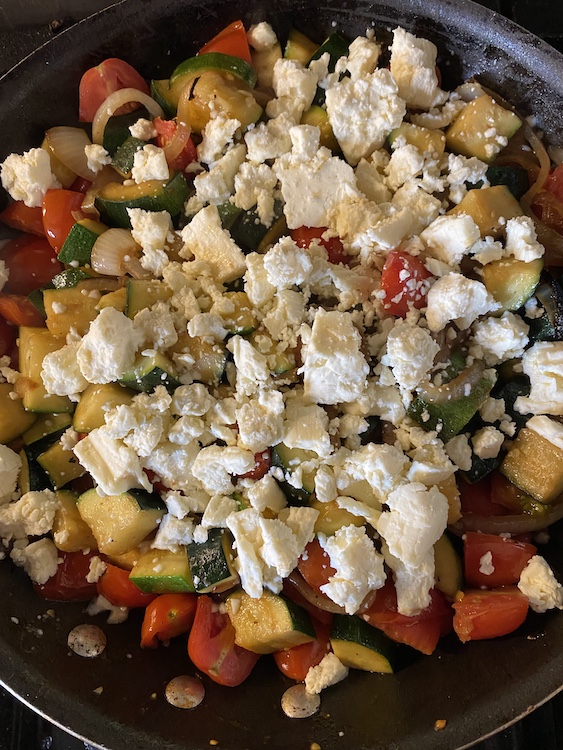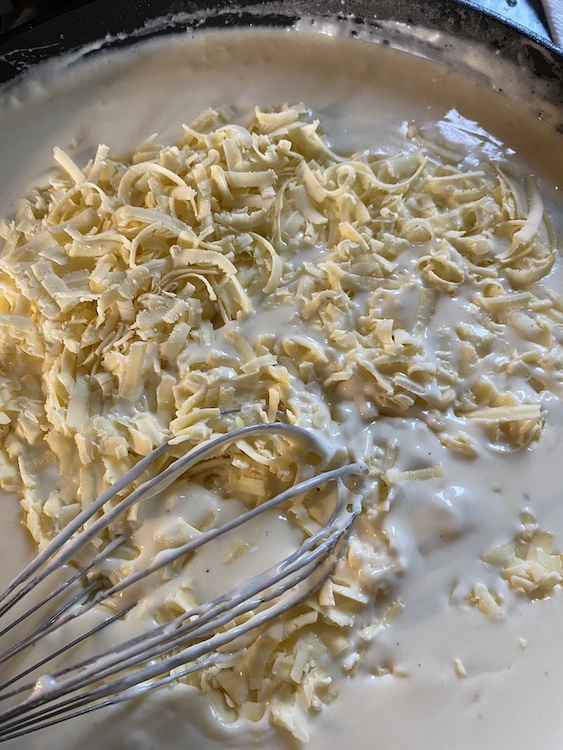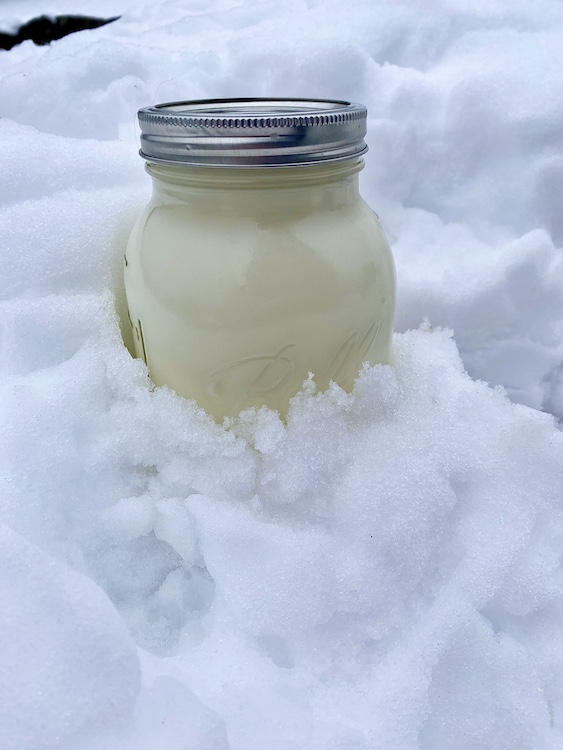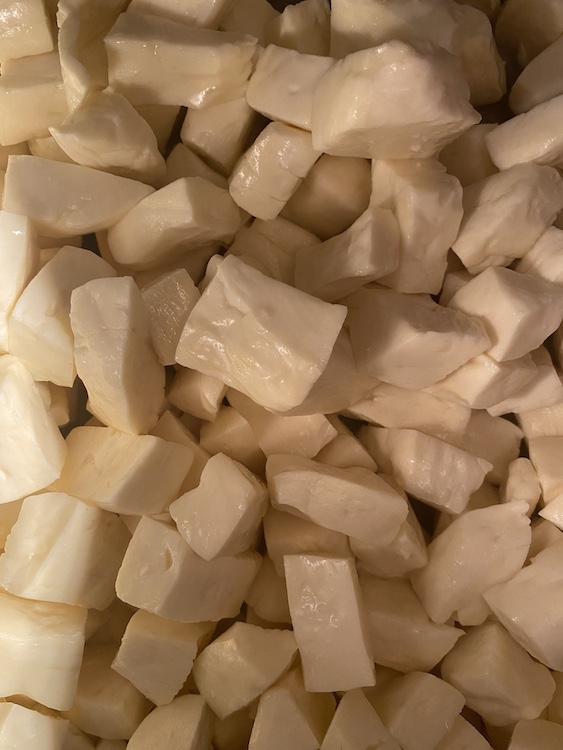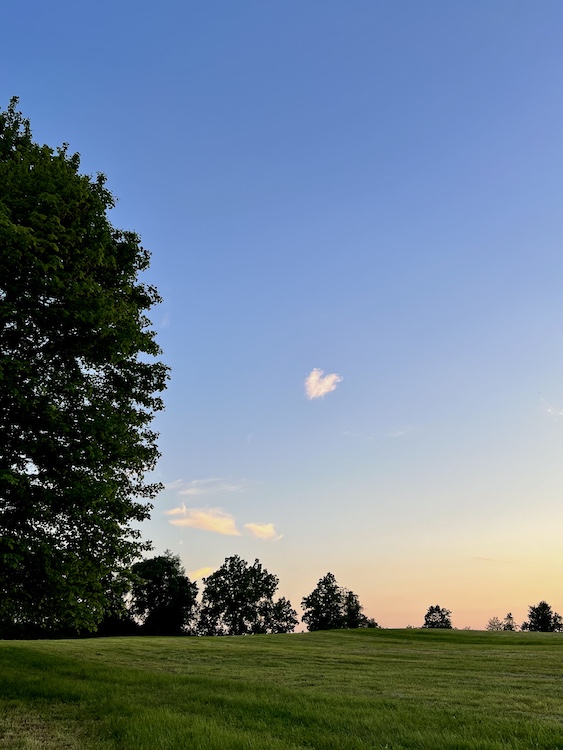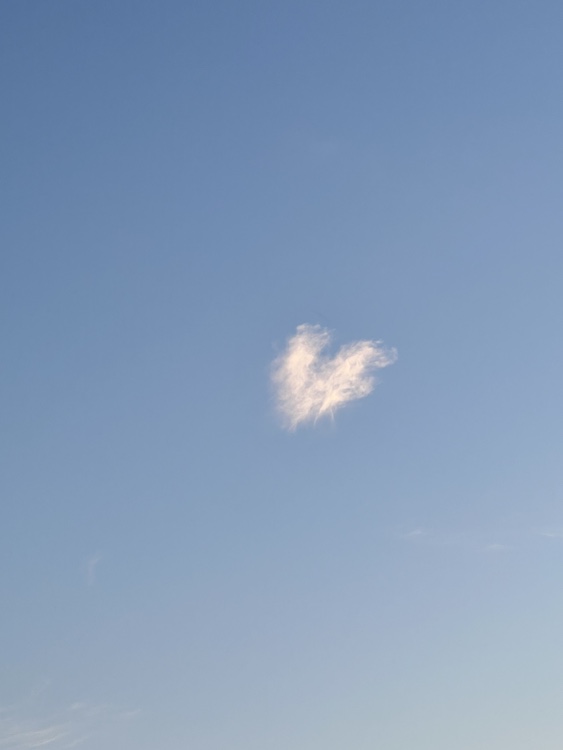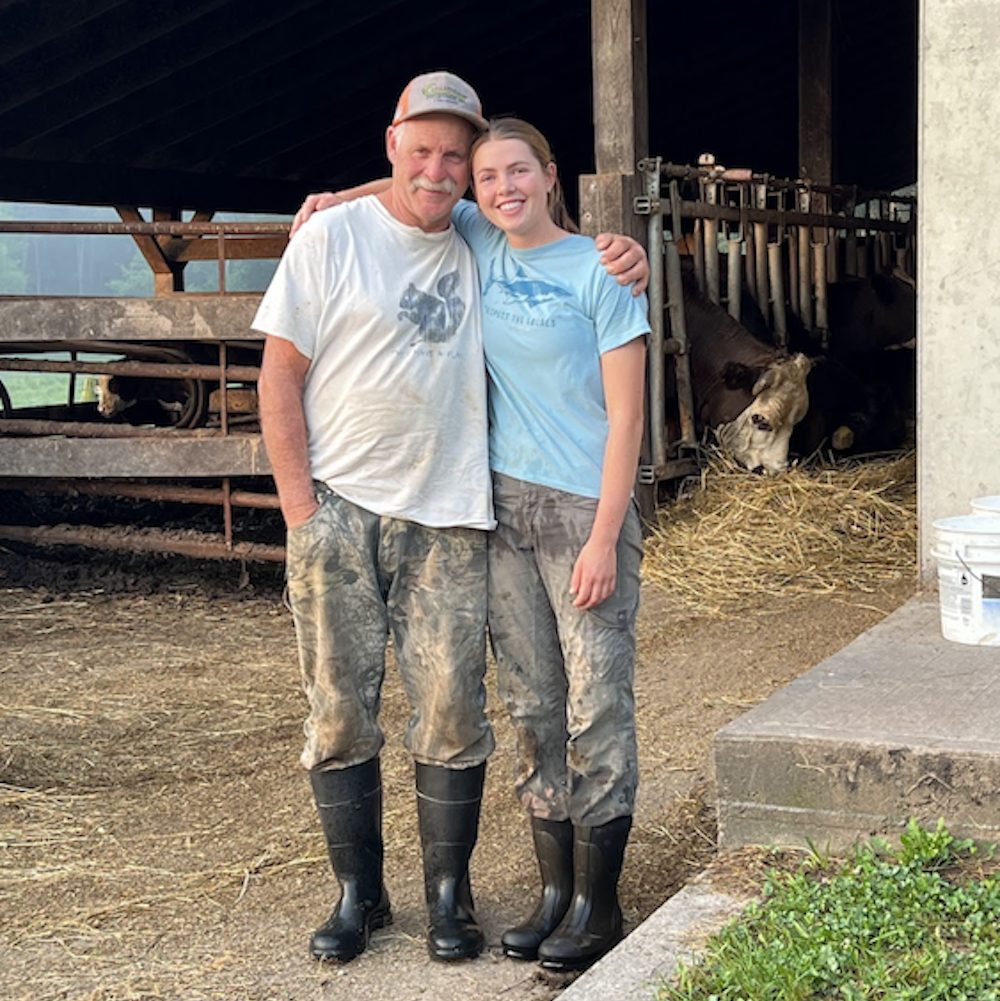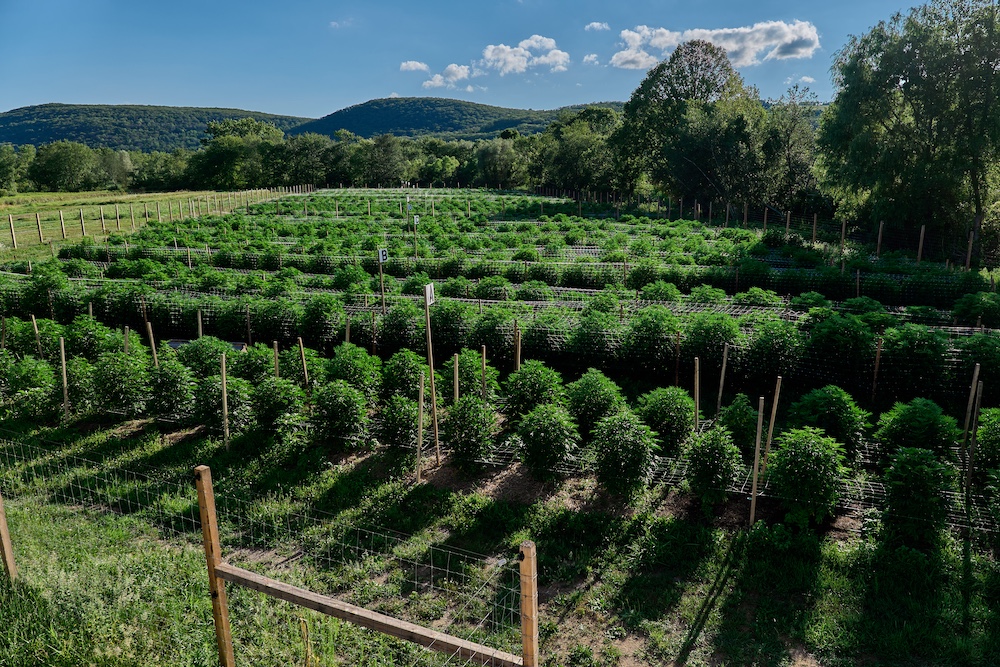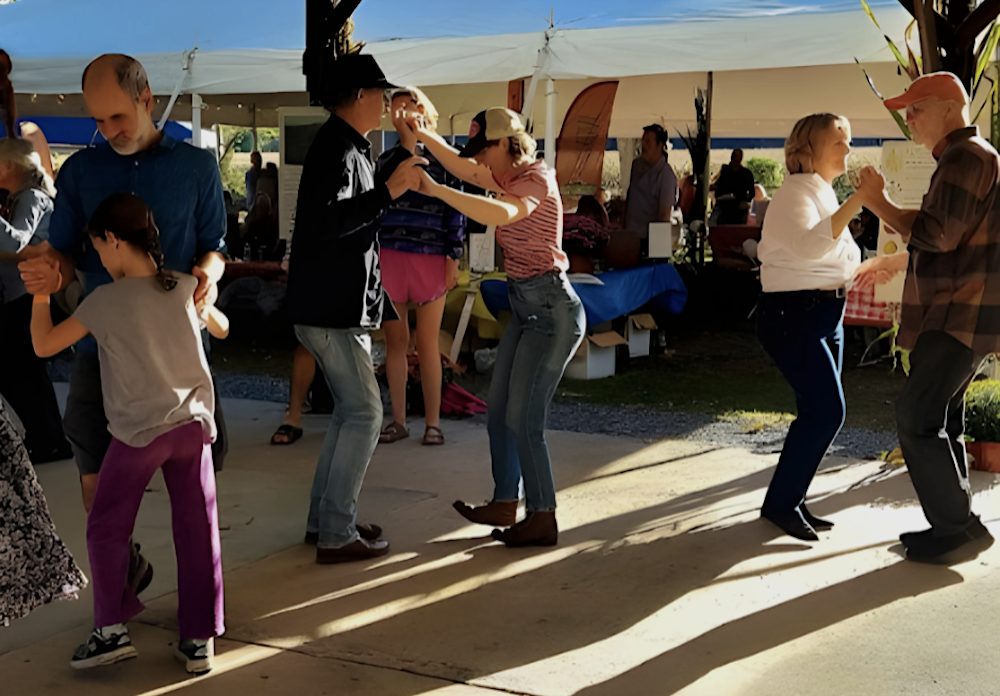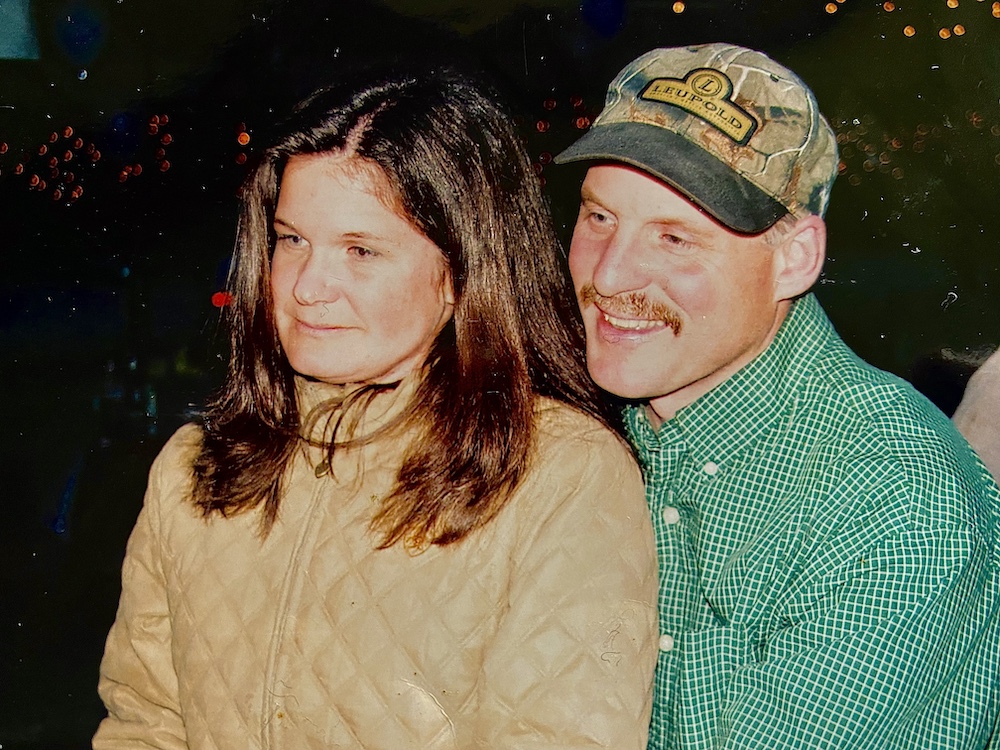
Gimme the Dirt…On Love and Dairy
I’ll let you in on a little secret: dairy is the foundation of our relationship. Some couples have their song, others have a special restaurant and meal, and still others have a unique activity like hiking or biking that connects their lives and hearts. But us? It’s anything dairy: milk, cheese, or the cows…name something casein-related and we will get doe-eyed and nostalgic for the beginning of things for us. Part of our story is that this is a second marriage for each of us, and while we do have children of our own, we didn’t have them together. Our cows, in some weird way, fill that place (our pups Winston and Molly can’t read, so it’s okay for me to say this). Early on in our dating life, there was little time for Barton to take me out to dinner or a movie. In addition to the postal job that to this day provides our health insurance, he was also milking a 50-cow herd at a leased dairy several miles away, maintaining a large group of young stock at his home farm, and growing the crops on even more acreage to feed all those cows, too. Dating definitely looked different for us than it would’ve for anyone else!
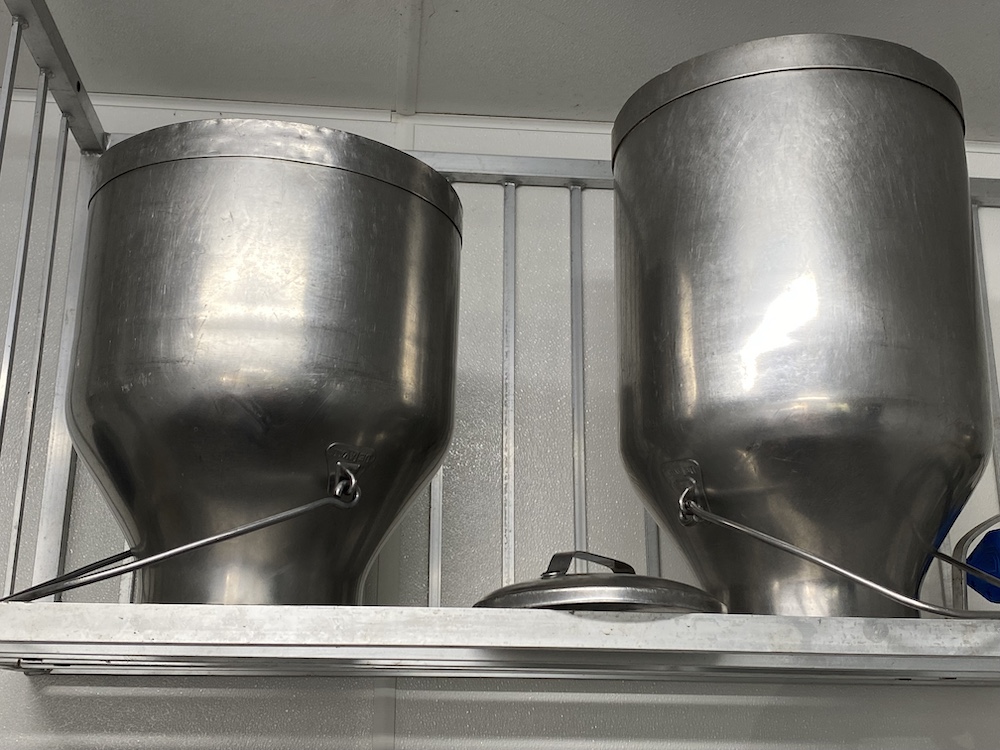
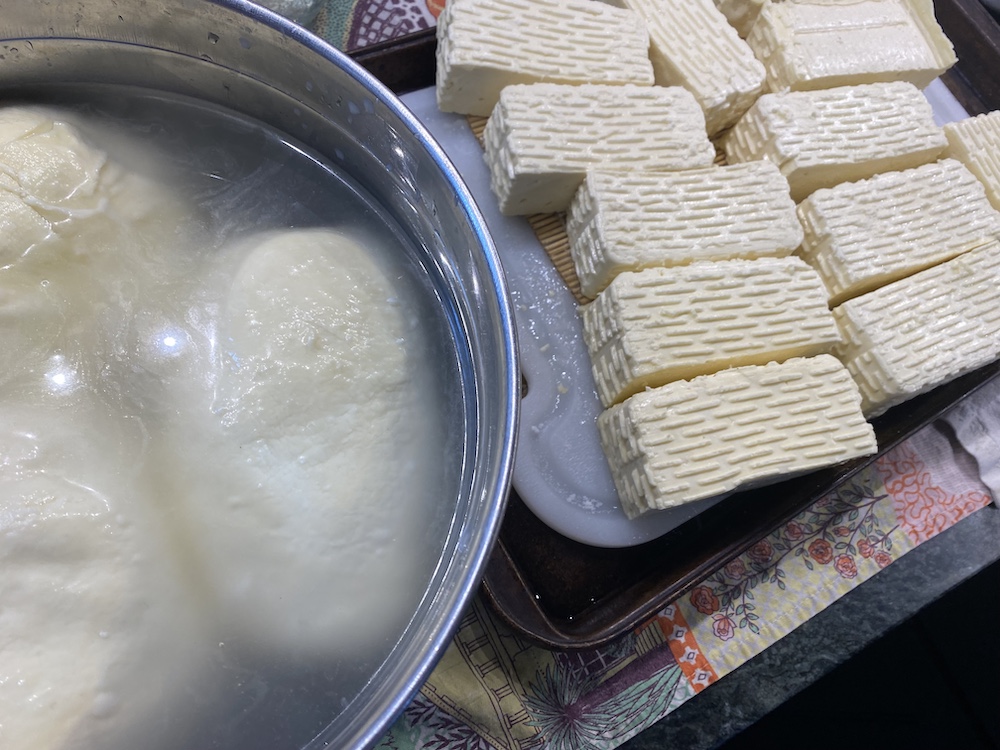
Together in the milking barn, we got to know each other, and that, too, looked different from other new couples. Instead of a glass of wine accompanied by soft music, we chatted over the rhythmic clack of the milking equipment, with calves noisily interrupting what were often thought-provoking conversations. Other “dates” involved me and one or both of our two teenage children (his older boy, my younger girl) unloading huge, tightly-packed wagons onto the hay elevator, while Barton, sweating heavily, restacked it high above us in the broiling-hot haymow. There wasn’t much conversation, but there was a camaraderie not to be found in other aspects of my world. To this day, bringing in dry, square bales of hay is one of my favorite farm jobs, because the memories connected with it are so happy. I assure you, Barton has other feelings entirely.
Another kind of date that left a lasting impression on my heart was our adventure in cheesemaking. And no, this is not a euphemism for “hanky-panky.” Sometimes after milking was done, we would drive the few short miles back to his house, several gallons of fresh milk sloshing around in a can between us on the front seat of his old farm truck. Once we were cleaned up and dinner had settled in our stomachs, we could set about making cheese. Bart had all the tools and ingredients we needed; he was simply waiting for enough time, which was precious for him back then (it still is). Cheesemaking, like dating, takes time. There, in his kitchen, standing over his stove, he made the time for me. Together we watched the thermometer, wrapped our kettle in a towel to hold in the warmth, and “ooo-ed” and “ahhh-ed” as we cut curds and then drained and stretched them to make the best mozzarella I’d ever tasted. What started as a fun activity to do together quickly became an obsession for me. I used up all of Bart’s ingredients, and we ordered more. I made cheese when tomato season came, and now our dinners together included fresh mozzarella atop large slabs of dark red, freshly-picked tomatoes. I sometimes made more cheese than we could eat ourselves, so I gave it away. They were nothing fancy, those first cheeses I made, but they were enough to ensnare my palate in their relentless web of flavor. Looking back now, I understand how little I knew, but I was teaching myself the basics, which is always the very best place to start. By the time I had formal training making cheese, our children had long since grown up and flown, the large dairy herd had been sold and we were now raising Wagyu beef together as our new business venture. We still had three dairy cows, though, and one was extra-special: Brie.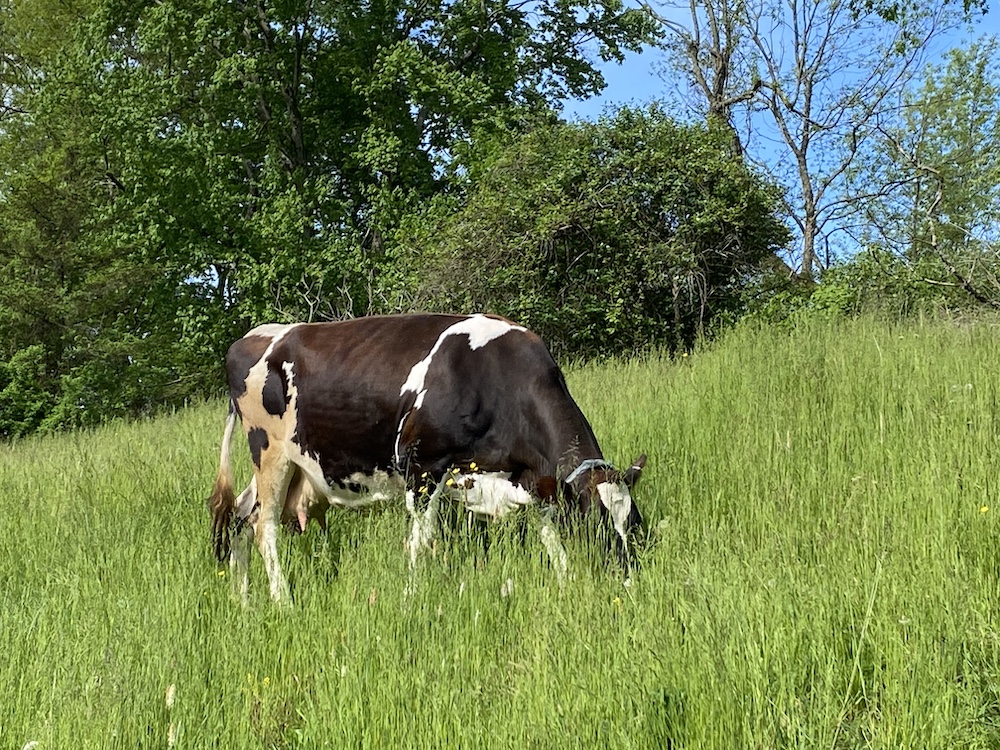
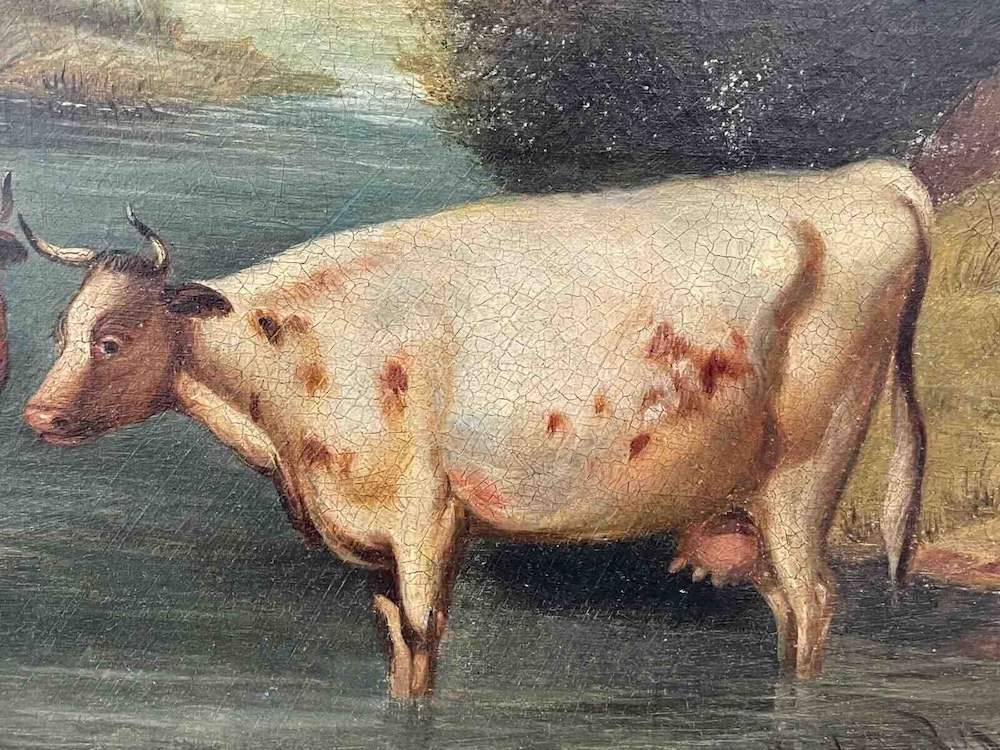
Georgian 18th Century Oil Painting
“Cattle Gathered Watering” from Cheshire Antiques Consultant
She was so exceptional, in fact, that when I pursued my non-local cheesemaking training, I couldn’t wait to get back home to start practicing what I’d learned with Brie’s milk. Brie was what is called a “Jersey cross.” Translating this from farmer-speak to real English means she was a mix of two breeds of cows: Jersey crossed with Holstein. She had the dark and white markings of a Holstein, but the dark parts were a rich reddish-brown, and she had large, deep eyes surrounded by long, lovely lashes. Her cute dished nose was also a dead giveaway of her Jersey origins. If her coloring and beautiful countenance didn’t betray her heritage, her curvy figure surely did. Brie had a huge, square barrel (torso), with a low-slung udder that filled to near-bursting before each milking. To me, she looked like a primitive folk art idea of what a cow should be. Brie’s milk was perfect for making cheese. Jersey cows make more solids in their milk than other breeds, and once Brie became my cheesemaking partner, I was soon making so much cheese we ran out of places to put it. So we ate it.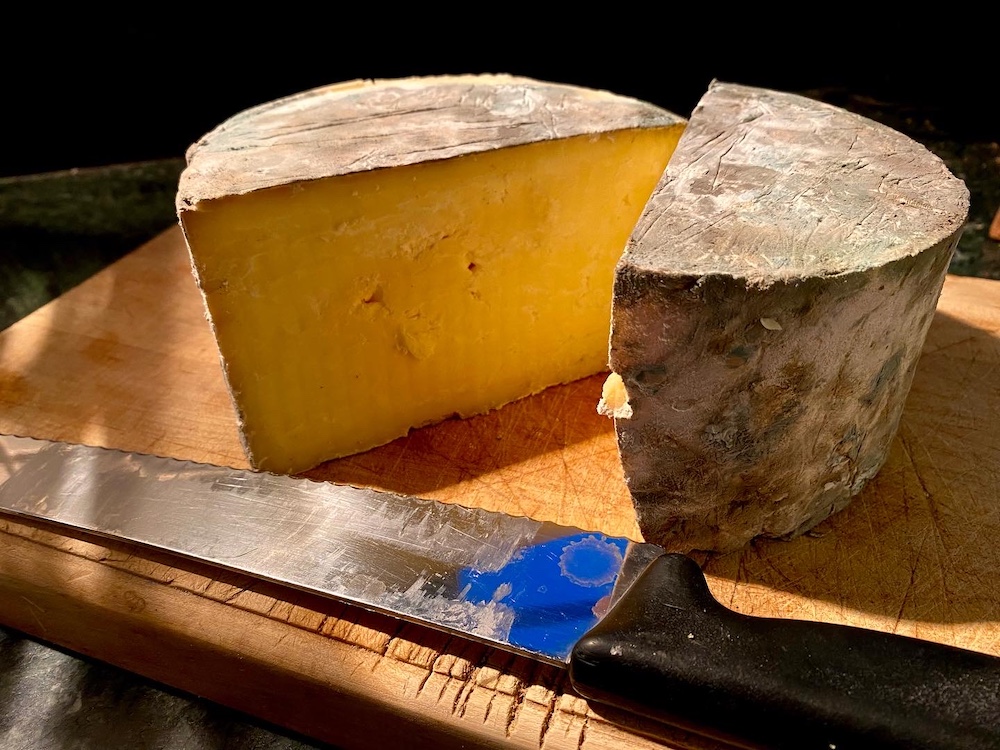
One year moved on to the next. During all the turning of those calendar pages, our dream stayed alive. It poured out of our initial points of connection in that leased milking barn so long ago, flowed into the farmhouse kitchen where we first made cheese together, and pooled in our hearts in a puddle: we wanted to have a small dairy of our own. Our milkhouse was perfect, minus the costly infrastructure required by both convenience and regulations. We diligently built other pieces of our business, and my cheesemaking evolved from barely edible mistakes to complex and crumbly aged cheddars I turned into cheese boards or tangy sauces for mac and cheese. I made feta that was at first mushy, and then firm, tart and briney, aging itself in its salt-watery jars until we baked it with tomatoes, garlic and olive oil, crumbled it over salads, or turned it into a feta whip. Sometimes on cold winter evenings, we transformed Wagyu tallow french fries into gravy-laden poutine using fresh, pillowy cheese curds still squeaky from the vat. One might think, reading this list of cholesterol-laden foods, that our health suffered, but it didn’t (although my own curviness started to resemble Brie’s). Our bloodwork showed that whatever we were doing, we needed to continue on that course. We gladly obliged. Behind it all was our dear, sweet Brie. She gave us gorgeous calves and proved herself a production powerhouse, certifying that age is nothing but a number, even with dairy cows. We milked her daughters and granddaughters, making cheese with milk from them all. But our favorite was always Brie. At 16 years old, Brie died tragically, and it’s not something I can talk about easily. She was a part of our dream together from nearly the beginning of our relationship, from the moment she stepped off the stock trailer as a gorgeous yearling until she breathed her last. She was the quarterback of our dream team. We would now have to move forward without her.
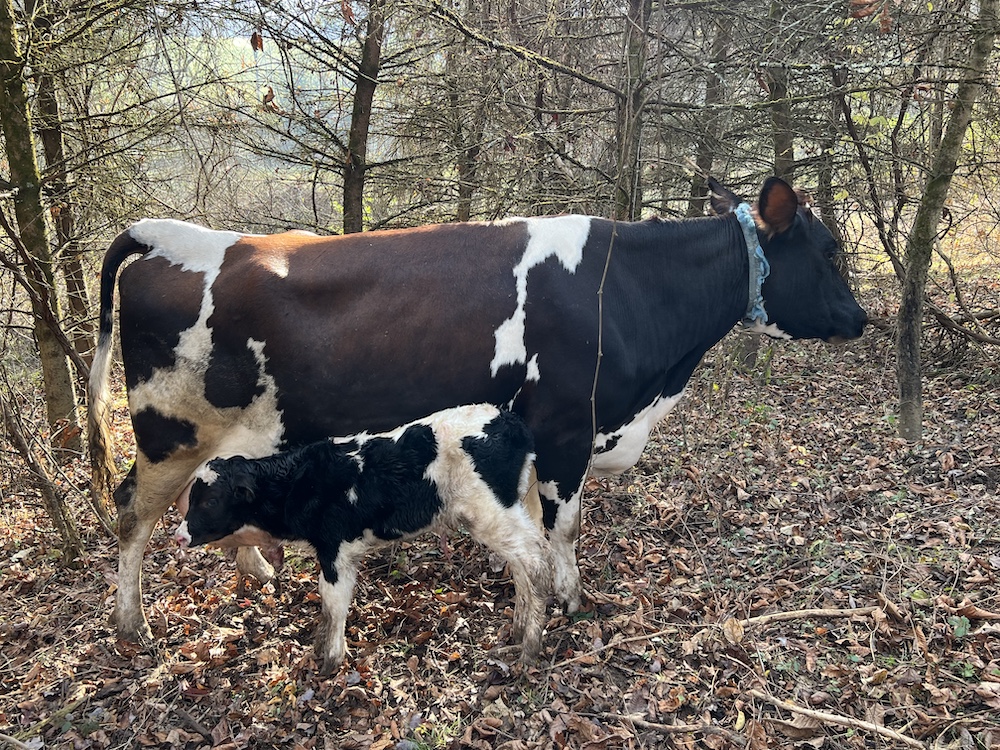
Finally, we are about to embark on the very last stage of birthing our dream. This last push will involve enormous work and tricky logistics, but our dairy will soon be finished. We won’t be milking 50 cows, or even 10. There’s just enough room for eight milk cows in our lower barn, and we will never be bigger than that. Every cow in our micro-herd is related to Brie, so her role as the queen of the barn is assured. Her last daughter, Bolt, has a gorgeous heifer calf named Birdie: Brie’s granddaughter. Brie’s daughter, Valley, stands near her own full-grown daughter, Vroom, and they produce enormous quantities of rich, glorious milk. And nearby are their daughters – more of Brie’s legacy. Ivy, Brie’s first great-granddaughter, will soon be bred. And wee Almond, another daughter to Valley, is growing healthy and strong; and yes, her milk will be Almond milk (insert our cheeky smiles here). What we hope to sell come springtime, if all goes well with construction and inspections, will be raw A2 milk. That description carries with it controversy and doubt from certain sectors, but we are confident in the health benefits of the milk our cows produce.
Some experts claim that drinking raw milk is dangerous and that it carries harmful microbes, causing diseases with names that strike fear into human hearts. But the health benefits of drinking raw milk are well-documented, from a handful of heavy-hitting peer-reviewed studies to my own personal experience, and we plan to pursue selling it in spite of the skepticism and outright antipathy that surrounds it. These studies indicate that farms with high levels of hygiene and safety produce pathogen-free raw milk that has impactful health benefits. It has been found that children who consume safely produced raw milk exhibit a statistically significant lower incidence of asthma and atopic dermatitis than children who consume pasteurized milk. With asthma on the rise internationally, this finding could have a huge impact on worldwide human health. Sadly, lobbyists working for industrialized dairy spend millions to tip legislation their way. It’s generally understood that scare tactics are effective, and they are pursued with vigor, despite the fact that the money could be better spent investigating what is actually true. Anecdotally, I know the benefits of raw milk. When I consume a glass of whole raw milk before supper, my meal is smaller because I feel fuller. When I drink a glass of milk with breakfast, I am satiated for a longer period of time throughout the day. Consuming whole raw milk helps prevent me from snacking or eating too much. Additionally, I have several inflammatory conditions, and when I regularly drink raw milk, I simply feel better. My experience contradicts the common medical thought that dairy is highly inflammatory to human bodies. It might very well be true of pasteurized, homogenized milk, which contains broken-down proteins and fats that aren’t meant to be absorbed. But the truth for me is that drinking raw milk is medicine. Given the studies I’ve been reading, it’s not only true for me.
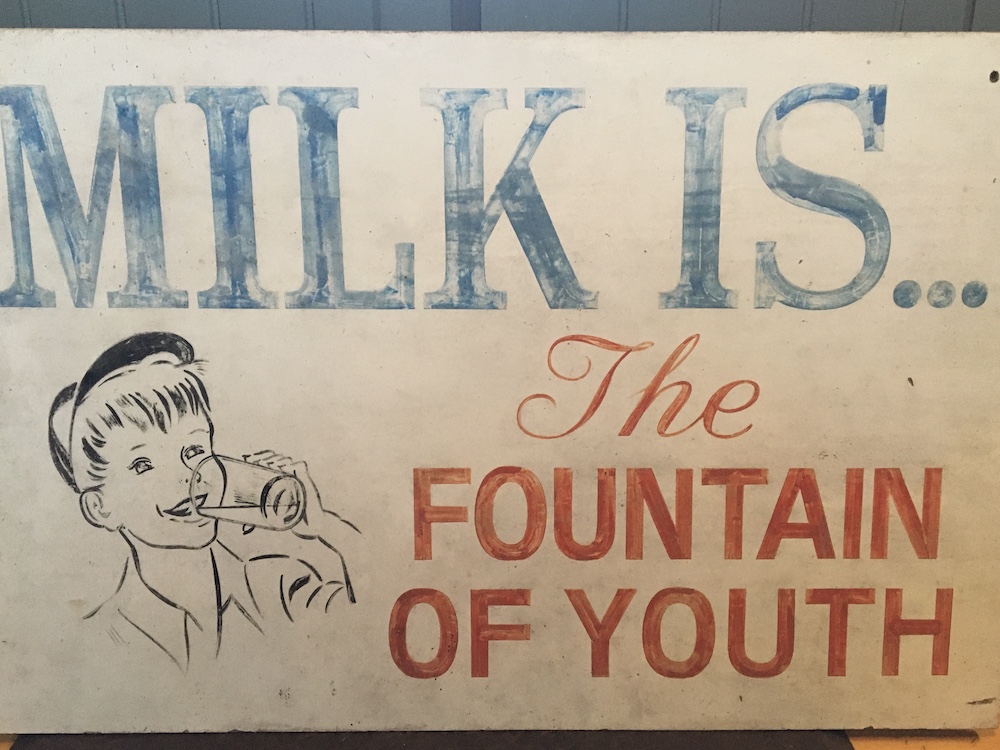
All the science-y stuff notwithstanding, what I find in my creamy glass of milk looks and tastes a whole lot like love. I know the cows’ names who produced it, I know their habits and quirks. I’ve helped them give birth, brushed their sleek coats, felt new calves move in their round bellies. I know who gets antsy at the end of her milking, and I know who won’t let me touch her until I give her a treat beforehand; if I forget, she reminds me with a gentle nudge of her nose as if to say, “Hey, wait a second!” I know how carefully I scrub the equipment after every milking, and the weight of the warm milk jar in my hands when I carry it to the house before breakfast. The milk I drink starts with the hay we grow, and every sip transports me to those fields with its grassy sweetness, even in the wintertime. It’s a time machine, carrying me backwards to where it all started for us: those first batches of simple mozzarella, made standing over the old farmhouse stove. And now every sip will move us forward, too, fueling us to a place where our dream finally becomes real. Our mornings and evenings in the milking barn together have become my favorite parts of the day. That old familiar clack of the pulsator is still the background music to rich conversations. The coziness of the barn, in the company of our cows and each other, is one of the most peaceful places on this farm. Visions of our goal in sight lighten the load and spur us on. I know every component of the milk our cows produce – the proteins, fats and sugars. I know the personal qualities that unite us in our work: laughter, joy, commitment and authenticity. But the greatest of these is love.
Photos courtesy of Rebecca Collins Brooks
Rebecca Collins Brooks is a farmer, writer and farmstead cheesemaker at Hilltop Farm in Accord, NY. She is the creator and founder of The Meeting of the Milkmaids, a gathering of women working in the cheese and dairy industry. In addition to a small herd of dairy cows, she and her husband, Barton, raise Wagyu beef, selling meat to customers directly off the farm. Her best friends are two terriers, Winston and Molly, and Sylvie, a truly brilliant barn cat. You can visit the farm by appointment to see where truly good food is grown.
Connect with Rebecca via Instagram @catskillwagyu, on Facebook CatskillWagyu
Check out > INSIDE+OUT’s Spotlight on Catskill Wagyu at Hilltop Farm
Write a Comment
You must be logged in to post a comment.



